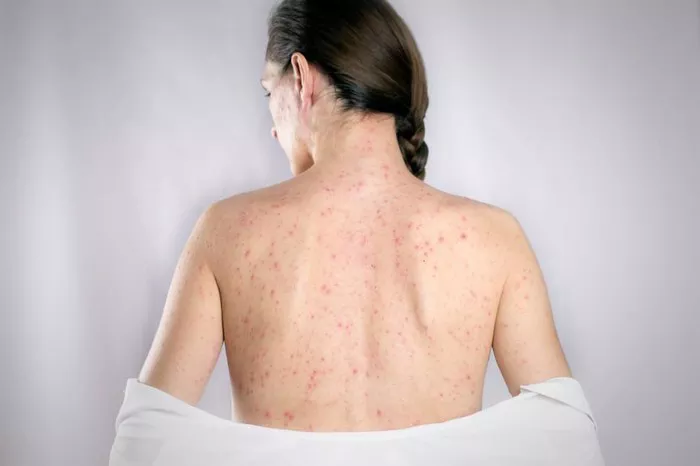Shingles, caused by the varicella-zoster virus (VZV), is a painful viral infection characterized by a rash with blisters. While this condition can occur at any time of the year, research suggests that there are certain seasons when its prevalence peaks. Understanding the seasonal trends of shingles is crucial for healthcare providers and individuals alike to better anticipate and manage the risks associated with this ailment. In this comprehensive article, we delve into the intricate relationship between shingles and the seasons, exploring the factors that contribute to its prevalence and providing insights into effective prevention strategies.
The Influence of Seasonality on Shingles Incidence
The incidence of shingles exhibits distinct seasonal patterns, with fluctuations observed across different geographical regions. Multiple studies have indicated a consistent trend wherein shingles cases tend to surge during specific times of the year, typically during late winter and early spring, as well as in the fall. The reasons behind this seasonal variation can be attributed to various environmental and biological factors.
1. Temperature and Humidity
Temperature and humidity levels play a significant role in shaping the prevalence of shingles. Cold weather, particularly during the winter months, can weaken the immune system, making individuals more susceptible to viral infections. Additionally, indoor heating systems often result in low humidity levels, which can exacerbate skin dryness and compromise the skin’s barrier function, facilitating the entry of pathogens such as the varicella-zoster virus.
Conversely, in regions where temperatures rise sharply during the summer months, individuals may experience increased exposure to ultraviolet (UV) radiation, which can also trigger shingles outbreaks by inducing stress on the immune system and reactivating latent VZV.
2. Seasonal Changes in Immune Function
The immune system exhibits seasonal variations, with certain components being more active or suppressed during specific times of the year. Factors such as vitamin D levels, which are influenced by sunlight exposure, can fluctuate seasonally and impact immune function. Reduced sunlight exposure during the winter months may lead to lower vitamin D levels, potentially weakening the immune response and predisposing individuals to shingles outbreaks.
Furthermore, changes in circadian rhythms, which regulate various physiological processes, including immune function, may contribute to the seasonal variation in shingles incidence. Disruptions to circadian rhythms due to factors such as daylight saving time transitions have been linked to alterations in immune function and increased susceptibility to viral infections.
3. Holiday Stress and Lifestyle Factors
The holiday season, characterized by increased stress levels, disrupted routines, and unhealthy lifestyle habits, can also influence the incidence of shingles. Stress is known to weaken the immune system and trigger inflammatory responses that can exacerbate existing health conditions, including shingles. Moreover, during holidays, individuals may engage in excessive consumption of alcohol, unhealthy eating habits, and inadequate sleep, all of which can compromise immune function and increase the risk of shingles outbreaks.
4. Age and Population Dynamics
Age is a significant risk factor for shingles, with older adults being more susceptible to the condition due to age-related decline in immune function and the presence of comorbidities. As the population ages, the overall burden of shingles increases, contributing to the observed seasonal trends. Additionally, vaccination coverage rates among older adults may vary seasonally, impacting the incidence of shingles outbreaks.
Preventive Strategies and Public Health Interventions
Understanding the seasonal patterns of shingles incidence is crucial for implementing targeted preventive strategies and public health interventions. Vaccination against shingles, such as the herpes zoster vaccine, can significantly reduce the risk of developing the condition and its associated complications. Encouraging vaccination among high-risk populations, particularly older adults, during peak seasons can help mitigate the burden of shingles and prevent outbreaks.
In addition to vaccination, promoting healthy lifestyle habits, stress management techniques, and adequate sunlight exposure can bolster immune function and reduce the risk of shingles. Public health campaigns aimed at raising awareness about the seasonal trends of shingles and educating individuals about preventive measures can empower communities to take proactive steps in safeguarding their health.
Conclusion
While shingles can occur throughout the year, its incidence exhibits distinct seasonal patterns, with peaks observed during late winter, early spring, and fall. Understanding the factors contributing to these seasonal variations, including temperature, humidity, immune function, lifestyle factors, and population dynamics, is essential for effective prevention and management strategies.
By implementing targeted interventions, such as vaccination programs and health promotion initiatives, healthcare providers and public health authorities can mitigate the burden of shingles and improve the overall health and well-being of populations. Through collaborative efforts and informed decision-making, we can work towards reducing the impact of shingles and enhancing the quality of life for individuals affected by this condition.


























